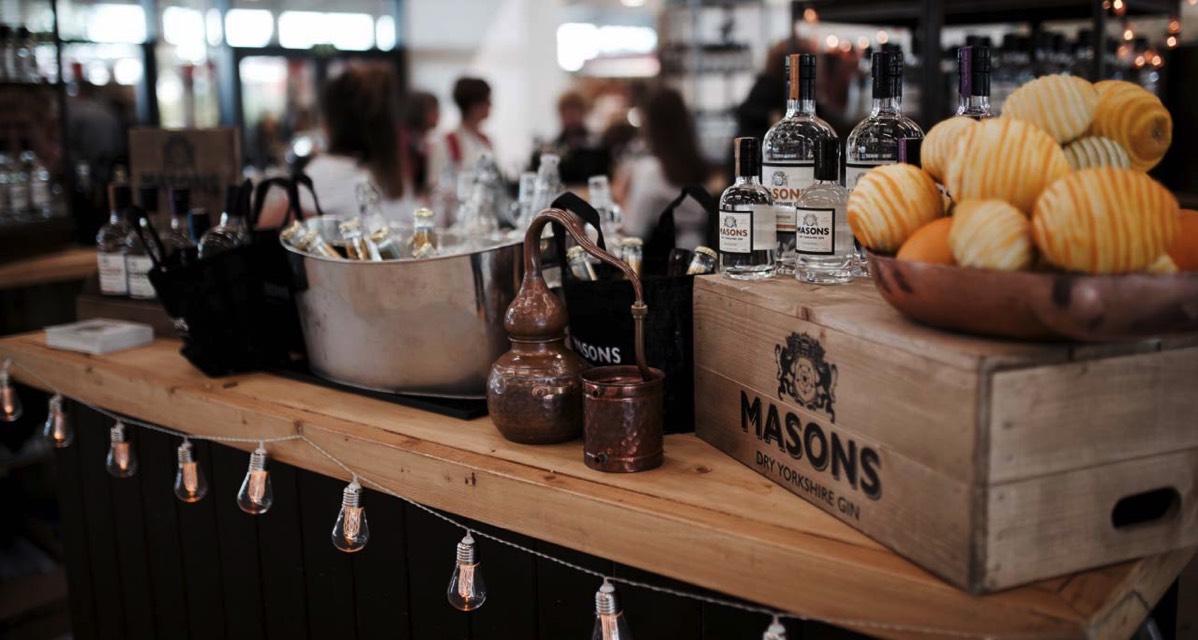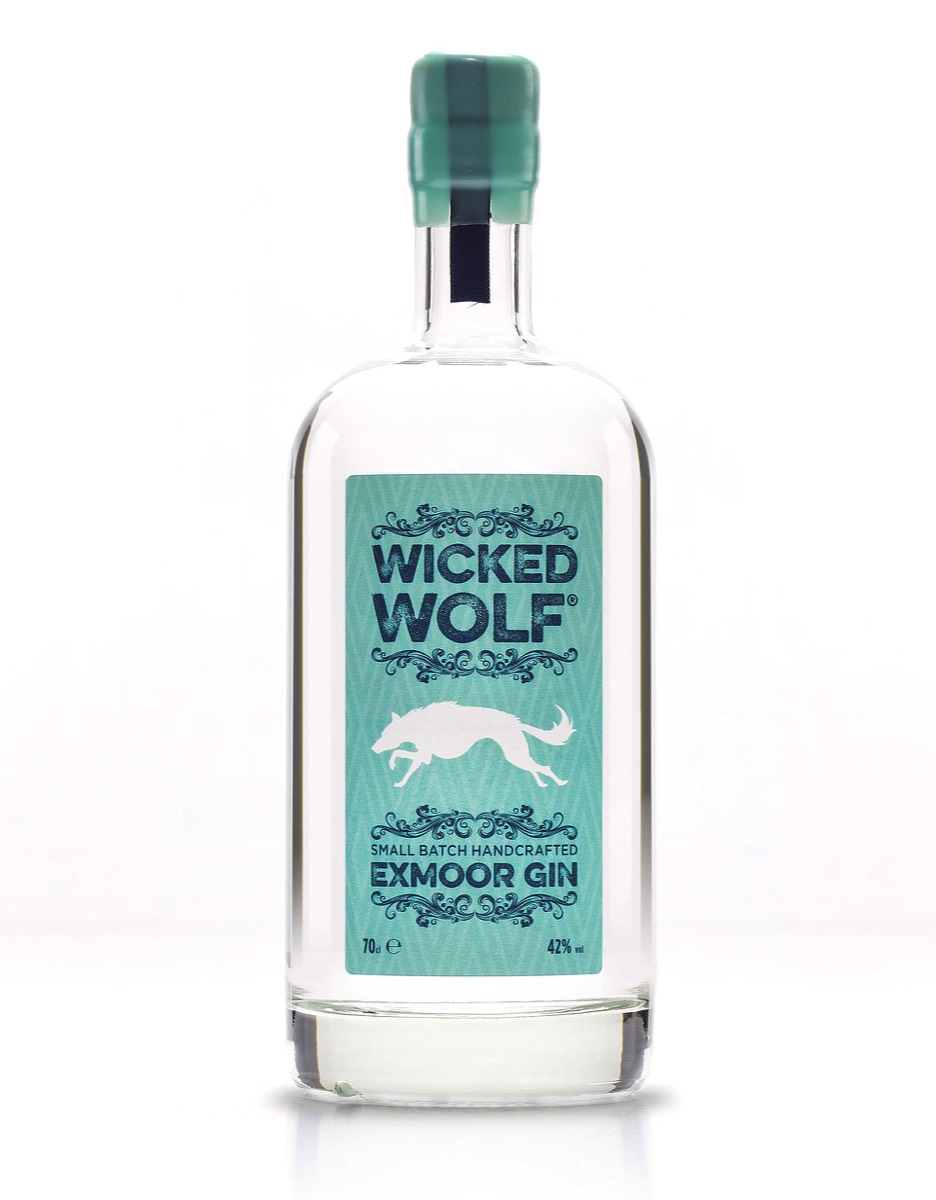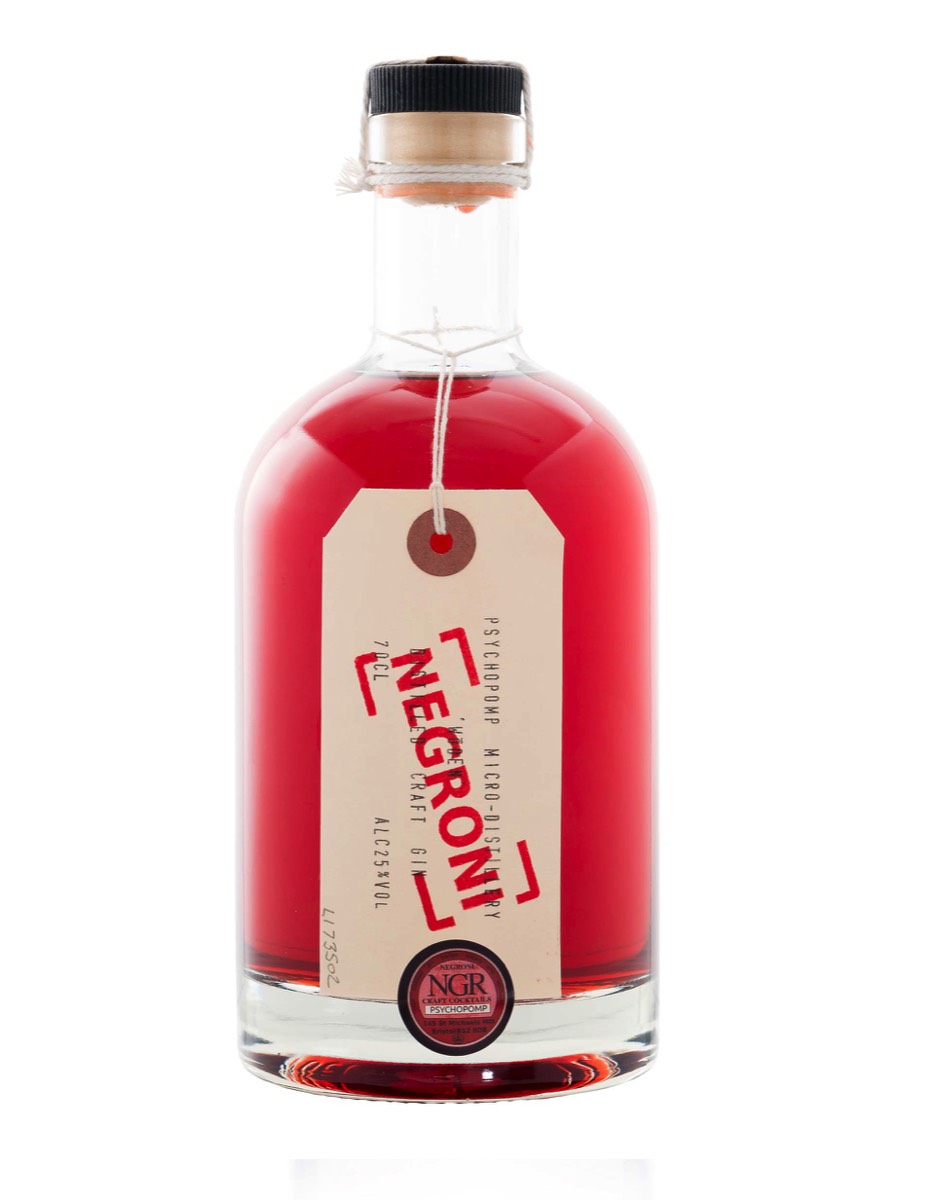GIN
Surrey’s Premier Lifestyle Magazine
Juniper heaven
Kevin Pilley takes a look at some local and national offerings.

In Surrey, you can’t beat the smell of Polish angelica, Macedonian junipers and dried pears in the early evening. And native conifers pre-prandially. Our county is the place to practice for World Gin Day in June. Or a sundowner every day. Be it with sloes, aged mulberry, ginger ale, elderflower cordial, a dash of bitters, an infusion of Seville orange or Sicilian lemon, vermouth, in Negroni, mulled or Martini form, with a slice of mild green chilli, a twist of grapefruit, wedge of lime, sprig of basil or rosemary, two quartered strawberries or cucumber ice cubes. Or just a slimline ‘Indian’.
Based in Kingston, Beckett’s London Dry Gin uses juniper hand-picked on Box Hill. Most juniper comes from Italy or the Balkans. Becketts’ founder, Neil Beckett, launched a conservation project with the National Trust after discovering juniper – the plant that gives gin its name – was in national decline due to an airborne fungus. Beckett’s also uses Surrey water mint.
James Shelbourne’s Silent Pool on the Albury Estate near Guildford uses spring water from a stream-fed lake in the North Downs to fire up ‘The Major’. As well as the new Albury Limited Release Premium Gin, Silent Pool has been working on an organic eau-de-vie de vin, Attila’s Bite, and an apple brandy.
Kate Gregory and Helen Muncie’s Gin Kitchen in an old barn at Goldenlands Farm, Dorking makes Gutsy Monkey and Dancing Dragontail, thanks to their stills Dinky and Daisy. Neil Redit and Paul Shubrook’s Elstead Village Distillers makes Thundry Hill. Everywhere now has a gin concern.
The 1793 Friars Distillery in Plymouth may be the country’s oldest gin distillery – allegedly the last port of call for the Pilgrim Fathers before they set sail for the New World – but Plymouth Gin, with other household names like Gordon’s (1769), Devon pharmacist James Burrough’s 1863 Beefeater’s, Nicholson’s (1730), Essex’s 1830 Tanqueray (The Pride of Basildon), Hayman’s (1863) and even early boutique gin pioneer Sipsmith in Chiswick are facing stiff competition from micro-distilleries around the country producing hand-crafted, often hand-foraged, eclectically-flavoured tipples.
In a decade, British gin exports to the US alone have grown 500 per cent. Tastes and drinking habits are changing. The success of ‘niche quality’ Home County producers like Beckett’s and Silent Pool reflect a trend in hyperlocal business and small-batch (less than 1,000 litres) philosophy. Searching for authenticity and difference, fashionable young consumers don’t mind paying for the personal touch, the perfect serve and genuine provenance. They are willing to pay to effuse about the layered complexity of their gin. Gins with attitude are in.
Experts predict gin will outsell whisky by 2020. Gin is fizzing. Drams are down. Vodka is on the rocks. Gin has been re-invented, re-imagined and re-badged. Artisanal gins are big business. Demand for premium hand-pressed, hand-labelled organic gin is high.
Every county has its gin. Based in Yorkshire, Whittaker’s is making clear sloe gin at its Harrogate Distillery; Masons Yorkshire Gin recommends Franklin and Sons’ tonic with lime peel for its tea gin made from Harrogate Yorkshire Tea and Fentiman’s herbal tonic with its lavender gin.
Northumberland has Hepple and Steampunk Pirate Rascal Strength with its skull bottle, as well as Fentimans. Leicestershire has Burleigh, Lancashire Thomas Dakin, Staffordshire Nelson Gin and Lincolnshire Pin Gin. There is Durham Gin, Cambridge Gin, Cotswolds, Norfolk and Brighton Gin (handmade by the seaside). Cambridge also has raspberry Pinkster Gin. And gin jam! Co-founder of Pinkster, Will Holt, explains: “We’d been scratching our heads for a while wondering what to do with all the leftover inebriated raspberries. There are worse ways to start the day!”
Based in Kingston, Beckett’s London Dry Gin uses juniper hand-picked on Box Hill. Most juniper comes from Italy or the Balkans. Becketts’ founder, Neil Beckett, launched a conservation project with the National Trust after discovering juniper – the plant that gives gin its name – was in national decline due to an airborne fungus. Beckett’s also uses Surrey water mint.
James Shelbourne’s Silent Pool on the Albury Estate near Guildford uses spring water from a stream-fed lake in the North Downs to fire up ‘The Major’. As well as the new Albury Limited Release Premium Gin, Silent Pool has been working on an organic eau-de-vie de vin, Attila’s Bite, and an apple brandy.
Kate Gregory and Helen Muncie’s Gin Kitchen in an old barn at Goldenlands Farm, Dorking makes Gutsy Monkey and Dancing Dragontail, thanks to their stills Dinky and Daisy. Neil Redit and Paul Shubrook’s Elstead Village Distillers makes Thundry Hill. Everywhere now has a gin concern.
The 1793 Friars Distillery in Plymouth may be the country’s oldest gin distillery – allegedly the last port of call for the Pilgrim Fathers before they set sail for the New World – but Plymouth Gin, with other household names like Gordon’s (1769), Devon pharmacist James Burrough’s 1863 Beefeater’s, Nicholson’s (1730), Essex’s 1830 Tanqueray (The Pride of Basildon), Hayman’s (1863) and even early boutique gin pioneer Sipsmith in Chiswick are facing stiff competition from micro-distilleries around the country producing hand-crafted, often hand-foraged, eclectically-flavoured tipples.
In a decade, British gin exports to the US alone have grown 500 per cent. Tastes and drinking habits are changing. The success of ‘niche quality’ Home County producers like Beckett’s and Silent Pool reflect a trend in hyperlocal business and small-batch (less than 1,000 litres) philosophy. Searching for authenticity and difference, fashionable young consumers don’t mind paying for the personal touch, the perfect serve and genuine provenance. They are willing to pay to effuse about the layered complexity of their gin. Gins with attitude are in.
Experts predict gin will outsell whisky by 2020. Gin is fizzing. Drams are down. Vodka is on the rocks. Gin has been re-invented, re-imagined and re-badged. Artisanal gins are big business. Demand for premium hand-pressed, hand-labelled organic gin is high.
Every county has its gin. Based in Yorkshire, Whittaker’s is making clear sloe gin at its Harrogate Distillery; Masons Yorkshire Gin recommends Franklin and Sons’ tonic with lime peel for its tea gin made from Harrogate Yorkshire Tea and Fentiman’s herbal tonic with its lavender gin.
Northumberland has Hepple and Steampunk Pirate Rascal Strength with its skull bottle, as well as Fentimans. Leicestershire has Burleigh, Lancashire Thomas Dakin, Staffordshire Nelson Gin and Lincolnshire Pin Gin. There is Durham Gin, Cambridge Gin, Cotswolds, Norfolk and Brighton Gin (handmade by the seaside). Cambridge also has raspberry Pinkster Gin. And gin jam! Co-founder of Pinkster, Will Holt, explains: “We’d been scratching our heads for a while wondering what to do with all the leftover inebriated raspberries. There are worse ways to start the day!”


Birmingham has Whitley Neill (making nettle gin) and Bristol Aurora Borealis and fennel finish Psychopomp Woden. Tyne and Wear boasts the Poetic License distillery in Sunderland. Herefordshire the William Chase Distillery where Sophie Piper recommends a slice of ginger with its award-winning London Dry Gin. Gloucestershire has Bramley & Gage’s 6 O’Clock.
Not be outdone, Paul Bowler of Winchester Distillery in Hampshire, home of Bombay Sapphire at Laverstoke Mill, makes Gunpowder Tea Gin (with south coast buckthorn) and Watercress Gin. Thanks to Paul, Hampshire is also the safest place to ask for a Twisted Nose.
English Saffron Gin is made in Essex by Peggy Attwood and her brother David Smale using east Anglian sugar beet, macadamia nuts and citrus zest. And homegrown saffron. Essex also boasts Slamsey’s Marmalade Gin.
While Kent, as well as hosting the annual sloe gin championships, claims Anno Gin and the Copper Rivet Distillery producing Dockyard Gin in Chatham. Devon has Wicked Wolf (The Spirit of Exmoor) and Dartmoor’s Black Dog.
London boasts boutique gin makers like Portobello Road, Jensen’s, Half Hitch of Camden Lock and the Sacred Spirits company which makes Christmas pudding gin. And gin with frankincense. Mark D. Hill’s Boxer Gin uses Italian bergamot and Himalayan black junipers. Sacred Gin is made from frankincense, in Highgate.
On the Isles of Scilly, the Hicks family on Westward Farm, St Agnes makes rose geranium-infused gin.
Northern Ireland has Shortcross, Eight Leaf, Gerry White’s Jackbox Classic and Boatyard. Ireland has Dingle Gin.
Scotland boasts the UK’s most northerly mainland distillery, Rock Rose at Dunnet Bay, Caithness.
St. Andrews has Eden Mill. Its Love Gin was created when founder Paul Miller’s wife Caroline suggested that after twenty years of brewing beer maybe he should make something special for her: a blush pink gin distilled with red rose petals, marshmallow root, goji berries and whole hibiscus flowers. It claims to be: “More romantic than any Barry White song.” Sea lettuce is used in Jura’s Lussa and Lynne and Steve Duthie make their Esker Gin with birch tree sap.
Wales has the Savage-Onstwedder family’s Dà Mhìle which makes seaweed gin at the Glynhynod Farm, Ceredigion. It was the UK’s first organic farmhouse distillery. Brecon Gin is made at the Penderyn whisky distillery. Conker Gin is produced by former chartered surveyor Rupert Holloway in an old laundry in Dorset.
Cornwall has Tarquin’s made at the South Western Distillery in Wadebridge. Ingredients include Guatemalan cardamom, Bulgarian coriander seeds, Kosovo juniper and hand-picked local violets. The distillery also makes Cornish Pastis. The Isle of Wight Distillery makes Mermaid Gin.
Gin can be made from any spirit. It’s the flavouring which matters. The botanicals. Fine gin can have as many as six. Some of the nouveau gins have many more. The Inner Hebridean Argyll gin, The Botanist, has thirty-one, twenty-two of them from the Isle of Islay. I’m told the aromas explode like an olfactory Aurora Borealis.
The new generation has shaken up the heritage brands. Even stills are becoming celebrities. Copper alembics have growing fan bases. An immersive gin experience is all about the pot.
Hendrick’s has ‘Bennet’ and ‘Carver-Head’. The Botanist has ‘Ugly Betty’. Lussa has ‘Hamish’ from Portugal. Warner Edwards Distillery makes its rhubarb and honey bee gins with the help of ‘Curiosity’. Masons has ‘Steve’, ‘Leftie’ and German ‘Katie’.
Turning out lavender, tea and peppered pear gins, Warner Edwards is proud of ‘Curiosity’ and ‘Satisfaction’. They help produce rhubarb gin which initially came from a strain of rhubarb originating from Queen Victoria’s kitchen garden at Buckingham Palace. On Curiosity’s arrival at Falls Farm, a curious cat left its paw prints in the wet cement of the distillery floor which led to the name.
‘Tamara’, ‘Senara’ and ‘Ferrara’ are busy in Cornwall. Thames Distillers Timbermill Distillery in Clapham employs ‘Tom Thumb’. At Bramley & Gage, ‘Kathleen’ (named after the founder’s mother) does all the work. Burleigh has ‘Messy Bessy’ – master distiller Jamie is a big Louis Jordan fan. ‘Merlin’ gives birth to English Saffron Gin. ‘Oisin’ is the mother of Dingle. Durham Distillery has ‘Lily’, named after the owner’s daughter. And Snowdonia Distillery’s ‘Eiranwen’ produces Forager’s Gin.
‘Annie’ makes Makar Gin. Devon’s John Lawton’s Black Dog Gin’s pot still is named ‘Ethyl Ethel’. Britain’s first single estate, field-to-bottle Chase Distillery christened its still ‘Ginny’.
Surrey’s Silent Pool has ‘Juliet’, named after the director’s late mother, Juliet Shelbourne. Says her son and Surrey gin-meister James: “She was an incredibly vibrant and energetic lady. In her later years she suffered from cancer and one of the last trips she made before becoming bedbound was to the distillery. She loved it, and so when she passed it seemed like a natural fit.”
The still at Beckett’s is the still with no name. Says Keith Beckett: “As a chartered engineer, giving names to items of capital equipment is far too sentimental for me!”
In Dorking, Kate Gregory and fellow gin lover Helen Muncie of The Gin Kitchen create their Gutsy Monkey in a still called ‘Dinky Dragondale’. “We perform a juniper maceration dance around it!” says Helen, a psychologist. Surrey’s gin ladies recommend Peter Spanton lemongrass tonic with The Gin Kitchen’s Dancing Dragontail summer gin.
Like the whole country, Surrey has become soft on the nose and gentle but lively on the tongue.
And it is always coming up to gin o’clock. All year round.
Not be outdone, Paul Bowler of Winchester Distillery in Hampshire, home of Bombay Sapphire at Laverstoke Mill, makes Gunpowder Tea Gin (with south coast buckthorn) and Watercress Gin. Thanks to Paul, Hampshire is also the safest place to ask for a Twisted Nose.
English Saffron Gin is made in Essex by Peggy Attwood and her brother David Smale using east Anglian sugar beet, macadamia nuts and citrus zest. And homegrown saffron. Essex also boasts Slamsey’s Marmalade Gin.
While Kent, as well as hosting the annual sloe gin championships, claims Anno Gin and the Copper Rivet Distillery producing Dockyard Gin in Chatham. Devon has Wicked Wolf (The Spirit of Exmoor) and Dartmoor’s Black Dog.
London boasts boutique gin makers like Portobello Road, Jensen’s, Half Hitch of Camden Lock and the Sacred Spirits company which makes Christmas pudding gin. And gin with frankincense. Mark D. Hill’s Boxer Gin uses Italian bergamot and Himalayan black junipers. Sacred Gin is made from frankincense, in Highgate.
On the Isles of Scilly, the Hicks family on Westward Farm, St Agnes makes rose geranium-infused gin.
Northern Ireland has Shortcross, Eight Leaf, Gerry White’s Jackbox Classic and Boatyard. Ireland has Dingle Gin.
Scotland boasts the UK’s most northerly mainland distillery, Rock Rose at Dunnet Bay, Caithness.
St. Andrews has Eden Mill. Its Love Gin was created when founder Paul Miller’s wife Caroline suggested that after twenty years of brewing beer maybe he should make something special for her: a blush pink gin distilled with red rose petals, marshmallow root, goji berries and whole hibiscus flowers. It claims to be: “More romantic than any Barry White song.” Sea lettuce is used in Jura’s Lussa and Lynne and Steve Duthie make their Esker Gin with birch tree sap.
Wales has the Savage-Onstwedder family’s Dà Mhìle which makes seaweed gin at the Glynhynod Farm, Ceredigion. It was the UK’s first organic farmhouse distillery. Brecon Gin is made at the Penderyn whisky distillery. Conker Gin is produced by former chartered surveyor Rupert Holloway in an old laundry in Dorset.
Cornwall has Tarquin’s made at the South Western Distillery in Wadebridge. Ingredients include Guatemalan cardamom, Bulgarian coriander seeds, Kosovo juniper and hand-picked local violets. The distillery also makes Cornish Pastis. The Isle of Wight Distillery makes Mermaid Gin.
Gin can be made from any spirit. It’s the flavouring which matters. The botanicals. Fine gin can have as many as six. Some of the nouveau gins have many more. The Inner Hebridean Argyll gin, The Botanist, has thirty-one, twenty-two of them from the Isle of Islay. I’m told the aromas explode like an olfactory Aurora Borealis.
The new generation has shaken up the heritage brands. Even stills are becoming celebrities. Copper alembics have growing fan bases. An immersive gin experience is all about the pot.
Hendrick’s has ‘Bennet’ and ‘Carver-Head’. The Botanist has ‘Ugly Betty’. Lussa has ‘Hamish’ from Portugal. Warner Edwards Distillery makes its rhubarb and honey bee gins with the help of ‘Curiosity’. Masons has ‘Steve’, ‘Leftie’ and German ‘Katie’.
Turning out lavender, tea and peppered pear gins, Warner Edwards is proud of ‘Curiosity’ and ‘Satisfaction’. They help produce rhubarb gin which initially came from a strain of rhubarb originating from Queen Victoria’s kitchen garden at Buckingham Palace. On Curiosity’s arrival at Falls Farm, a curious cat left its paw prints in the wet cement of the distillery floor which led to the name.
‘Tamara’, ‘Senara’ and ‘Ferrara’ are busy in Cornwall. Thames Distillers Timbermill Distillery in Clapham employs ‘Tom Thumb’. At Bramley & Gage, ‘Kathleen’ (named after the founder’s mother) does all the work. Burleigh has ‘Messy Bessy’ – master distiller Jamie is a big Louis Jordan fan. ‘Merlin’ gives birth to English Saffron Gin. ‘Oisin’ is the mother of Dingle. Durham Distillery has ‘Lily’, named after the owner’s daughter. And Snowdonia Distillery’s ‘Eiranwen’ produces Forager’s Gin.
‘Annie’ makes Makar Gin. Devon’s John Lawton’s Black Dog Gin’s pot still is named ‘Ethyl Ethel’. Britain’s first single estate, field-to-bottle Chase Distillery christened its still ‘Ginny’.
Surrey’s Silent Pool has ‘Juliet’, named after the director’s late mother, Juliet Shelbourne. Says her son and Surrey gin-meister James: “She was an incredibly vibrant and energetic lady. In her later years she suffered from cancer and one of the last trips she made before becoming bedbound was to the distillery. She loved it, and so when she passed it seemed like a natural fit.”
The still at Beckett’s is the still with no name. Says Keith Beckett: “As a chartered engineer, giving names to items of capital equipment is far too sentimental for me!”
In Dorking, Kate Gregory and fellow gin lover Helen Muncie of The Gin Kitchen create their Gutsy Monkey in a still called ‘Dinky Dragondale’. “We perform a juniper maceration dance around it!” says Helen, a psychologist. Surrey’s gin ladies recommend Peter Spanton lemongrass tonic with The Gin Kitchen’s Dancing Dragontail summer gin.
Like the whole country, Surrey has become soft on the nose and gentle but lively on the tongue.
And it is always coming up to gin o’clock. All year round.
